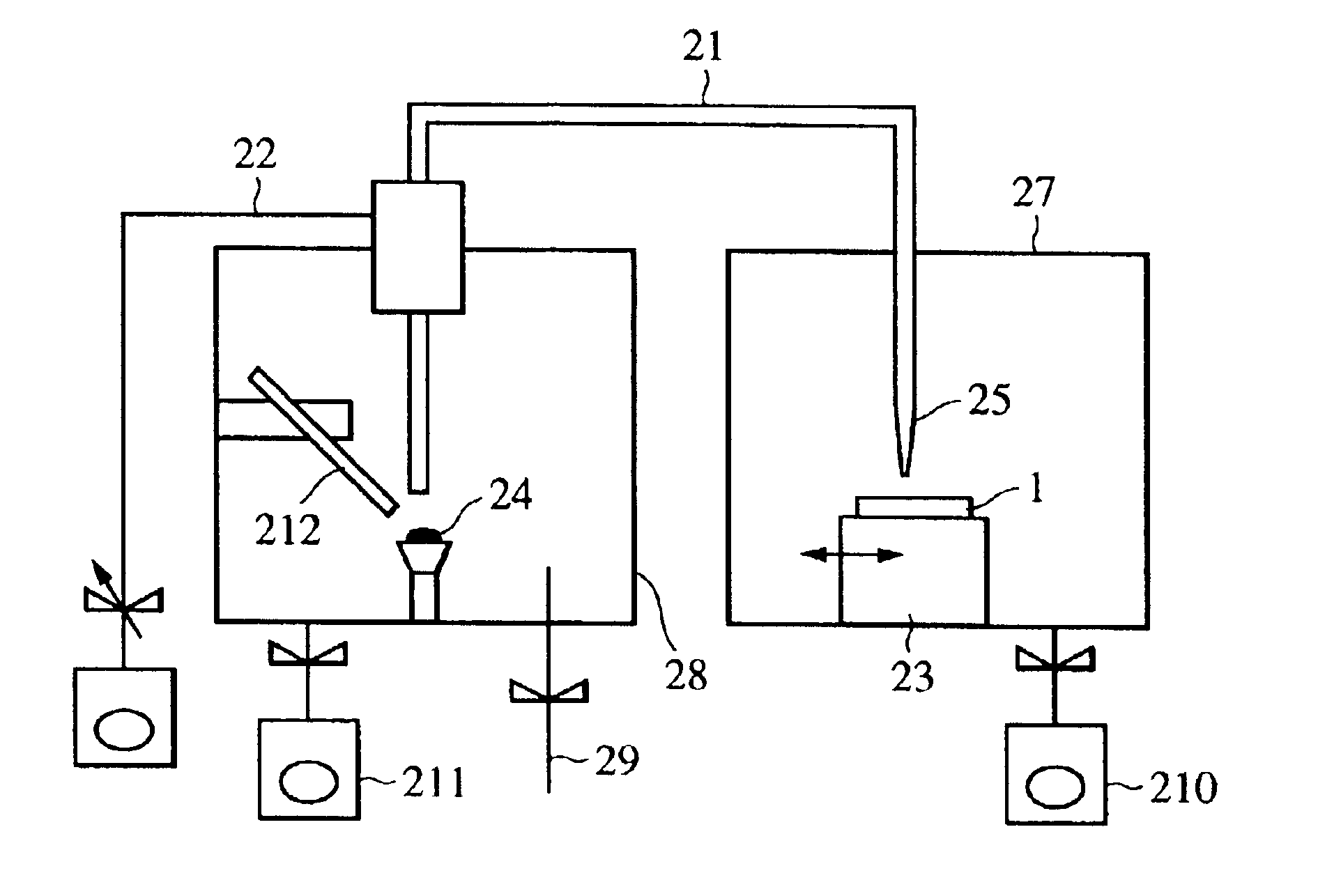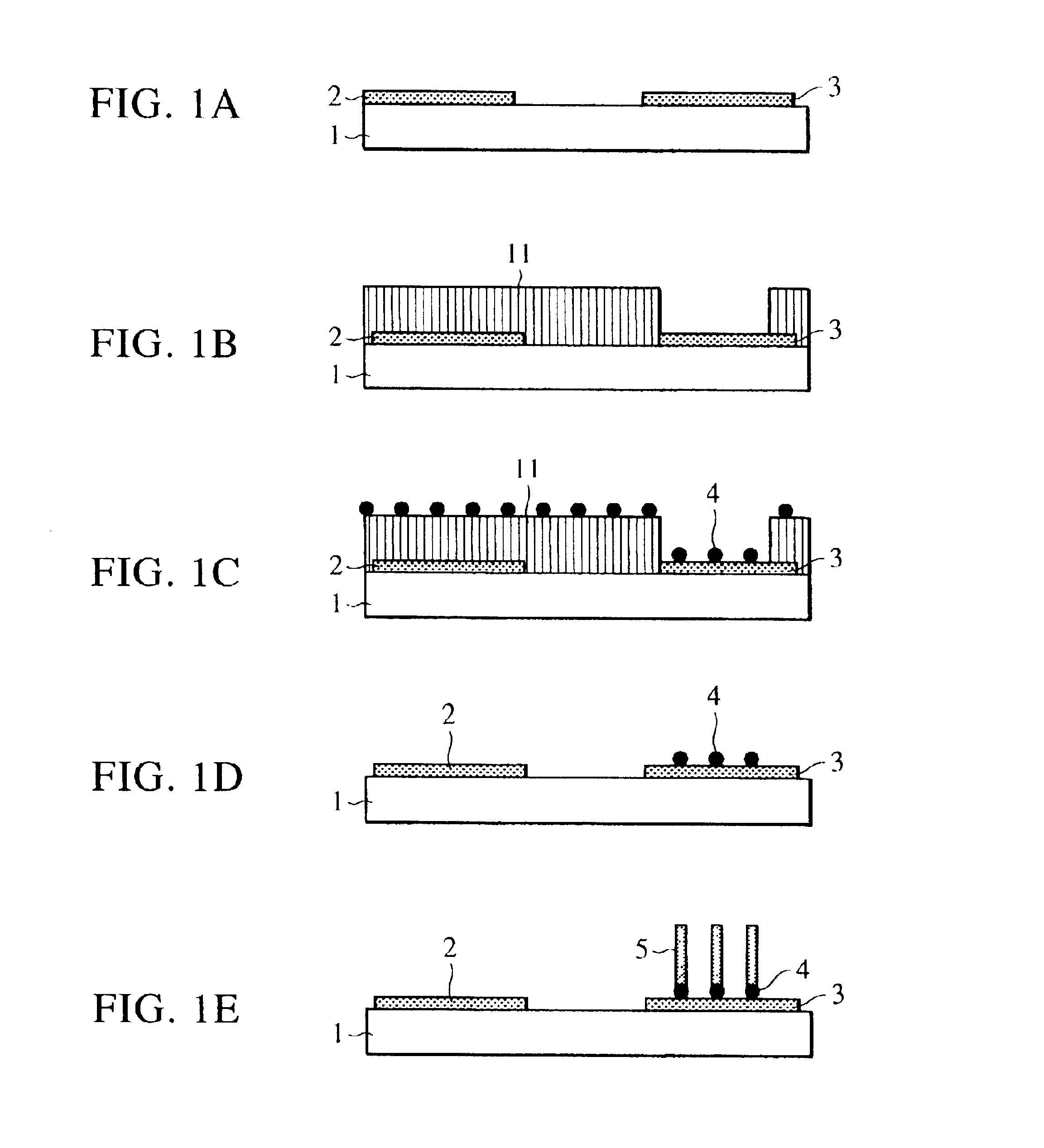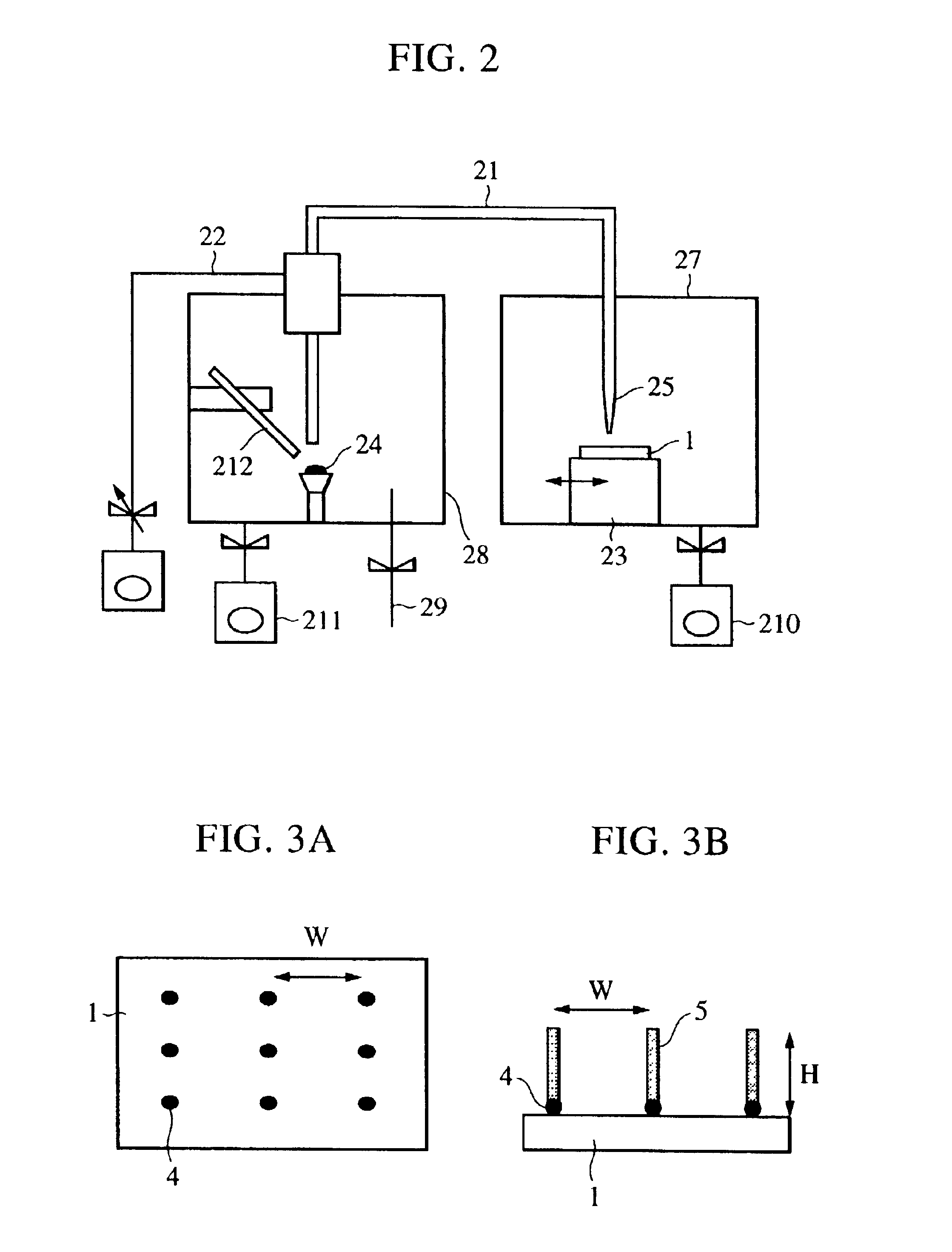Method of producing fiber, and methods of producing electron-emitting device, electron source, and image display device each using the fiber
- Summary
- Abstract
- Description
- Claims
- Application Information
AI Technical Summary
Benefits of technology
Problems solved by technology
Method used
Image
Examples
example 1
FIGS. 1A to 1E represent steps of a method of producing an electron emitting device in Example 1 of the present invention. FIG. 7 is a plan view showing the prepared electron emitting device. In FIG. 7, reference numeral 5 designates the region in which the fibrous carbon substances are formed. The production process for the electron-emitting device in the Example 1 will now be described below.
(Process 1)
A quartz substrate is used as the substrate 1, and sufficiently rinsed. Ti with a thickness of 5 nm, Pt with a thickness of 50 nm, and Ti with a thickness of 5 nm are vapor-deposited on the substrate in this order as a gate electrode 2 and a cathode 3 by photolithography and sputtering methods (see FIG. 1A).
(Process 2)
Next, a resist pattern 11 is formed using a negative photoresist (see FIG. 1B).
(Process 3)
Subsequently, catalytic particles 4 are arranged by a gas deposition method. As shown in FIG. 2, a substrate 1 is disposed on a stage 23 in an arraying chamber 27. Pd as the catal...
example 2
Hereinafter, Example 2 will be described, in which fibrous carbon substances having different qualities are formed in a manner similar to that in Example 1.
(Process 1)
The gate electrode 2 and the cathode 3 are formed on the quartz substrate 1, and thereafter, the resist pattern 11 is formed in a manner similar to the processes 1 and 2 in Example 1 (see FIG. 1A and FIG. 1B).
(Process 2)
The catalytic particles 4 are arranged in an array by the gas deposition method in a manner similar to the process 3 of Example 1. The conditions under which the particles are formed and arranged in an array are as follows.
Means for evaporating catalyst: resistance heating sublimation method (heating at 1400° C.)
Raw material for catalyst: mixture of Pd and Co
Pressure in forming chamber: 20000 Pa
Pressure in arraying chamber: 100 Pa
Distance d from evaporation portion to transport tube: 10 mm
Shape of employed nozzle: 0.3 mm×5 mm
Movement speed of stage: 10 cm / sec
Distance L between outlet of nozzle and subst...
example 3
In Example 3, catalytic particles are arranged on a substrate by the gas deposition method, without using a mask, (as an example). FIG. 11 illustrates a method of producing an electron emission device of Example 3.
(Process 1)
Ti with a thickness of 5 nm, Pt with a thickness of 50 nm, and Ti with a thickness of 5 nm are formed on the substrate in this order by the vapor deposition method (see FIG. 11A).
(Process 2)
The catalytic particles 4 are arranged in an array on the substrate 1 by the gas deposition method (FIG. 11B). The conditions for formation and arranging of the particles in an array are as follows.
Means for evaporating catalyst: resistance heating sublimation method (heating at 1400° C.)
Raw material for catalyst: mixture of Pd and Co
Pressure in forming chamber: 50000 Pa
Pressure in arraying chamber: 100 Pa
Distance d from evaporation portion to transport tube: 10 mm
Shape of employed nozzle: 0.5 mm φ
Movement speed of stage: 10 cm / sec
Distance L between outlet of nozzle and subst...
PUM
 Login to View More
Login to View More Abstract
Description
Claims
Application Information
 Login to View More
Login to View More - R&D
- Intellectual Property
- Life Sciences
- Materials
- Tech Scout
- Unparalleled Data Quality
- Higher Quality Content
- 60% Fewer Hallucinations
Browse by: Latest US Patents, China's latest patents, Technical Efficacy Thesaurus, Application Domain, Technology Topic, Popular Technical Reports.
© 2025 PatSnap. All rights reserved.Legal|Privacy policy|Modern Slavery Act Transparency Statement|Sitemap|About US| Contact US: help@patsnap.com



